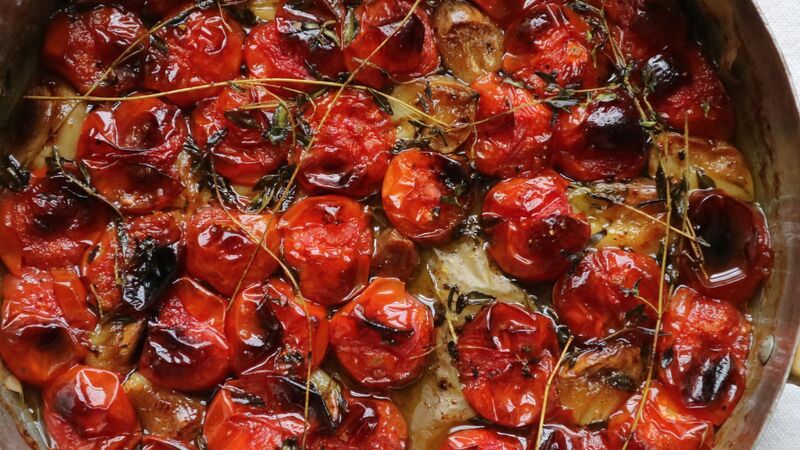James Kavanagh and William Murray: Three ways to cook with tomatoes

Winding across the green hilly farmland, through a saltwater marsh and finally threading around a proud wooded hill, the road reaches the point where the forest meets the sea. At this spot where the road levels out, marking the boundary between water and woodland, a modest ferryman's cottage sits nestled amongst old trees on a patch of land that stretches back towards the woods. A small path of ancient limestone slabs leads up behind the house to a little section where the surrounding trees offer a gap to the sky, allowing the sunshine to reach the soil. It is here that my mother keeps her vegetable patch. Taking up almost a quarter of the patch, a scrappy looking glasshouse sits like a little church, roof pointed to the heavens. Within the glasshouse are as many tomato plants as could be reasonably squeezed into such a compact space. This place of dedication to a single, beautiful fruit, is the greatest example of what can be achieved against so many odds when your fingers are as green as my mothers are. The sun may only truly beat down on us the odd time, but when it does, the strategically placed greenhouse seems to soak up its fill, enough to delight us every summer with a bounty of fruit.
Over the years, we have received a good collection of heirloom tomato seeds. The greenhouse currently yields several varieties including some very interesting examples such as ‘Black Krim’ which is a Russian heirloom with dark red/purple flesh. There are also ‘Brown berries’, ‘Russian Emerald’ and the very delicious ‘Gabacho Negro’. We also grow some regular cherry, plum and beefsteak examples. Pulling back the creaky sliding door, bowing your head to fit yourself inside, you are surrounded by a candyshop selection of juicy, beautiful and fragrant tomatoes.





